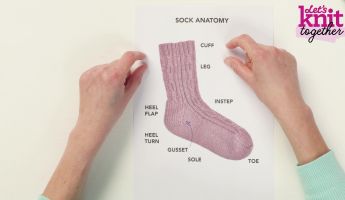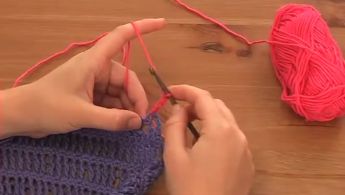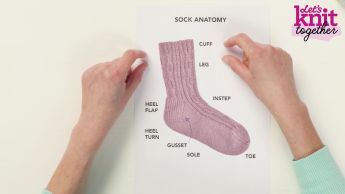How to: unravel knitting (frogging)
video by
Let's Knit Together
- Overview
- Practical Guides
Frogging is a safe way to undo your work by a number of rows if you spot a mistake or are just not happy with your knitting and want to restart, without having to go right back to the beginning.
You may find it easier to see the rows by taking out the left-hand needle and pulling back your work to a row or two above where you want to restart.
"Be clear about which row you want to go back to, as you only want to pick up stitches from this one and not stray into others. Use a thinner knitting needle than your project needle if you have one, as it will be easier to slip through the loops.
Work with the right-side facing you and from the first stitch on the right-hand edge. Insert the empty knitting needle under the right leg of the edge stitch, in effect up through the middle of this stitch, then continue to only pick up only the right leg of each stitch along this row, leap-frogging over the left leg. Take care not to split stitches as you go, as this will introduce new mistakes.
At the end of the row, check the stitch count is correct. You can now take out the top needle and pull on the working yarn to unravel the stitches. If you end up with the working yarn at the tip of the needle, simply carry on with your pattern, checking that you have indeed picked up the correct leg of each stitch as you go. Otherwise, depending on your cast-on method, you may have to transfer the stitches straight onto a project needle without twisting them to get the working yarn at the tip, then you’re ready to go.
It’s often a quick job to rip back smooth yarns, but more textured yarns such as mohair or eyelash take a bit more patience and you may need to carefully tease out or even snip at a few tangled fibres to unravel the main strand. In any case, ball up the yarn regularly to straighten it out and avoid a soft nest at your side that your pet won’t be able to resist!
And why is it called ‘frogging’? Because you ‘rip it, rip it’!"









































